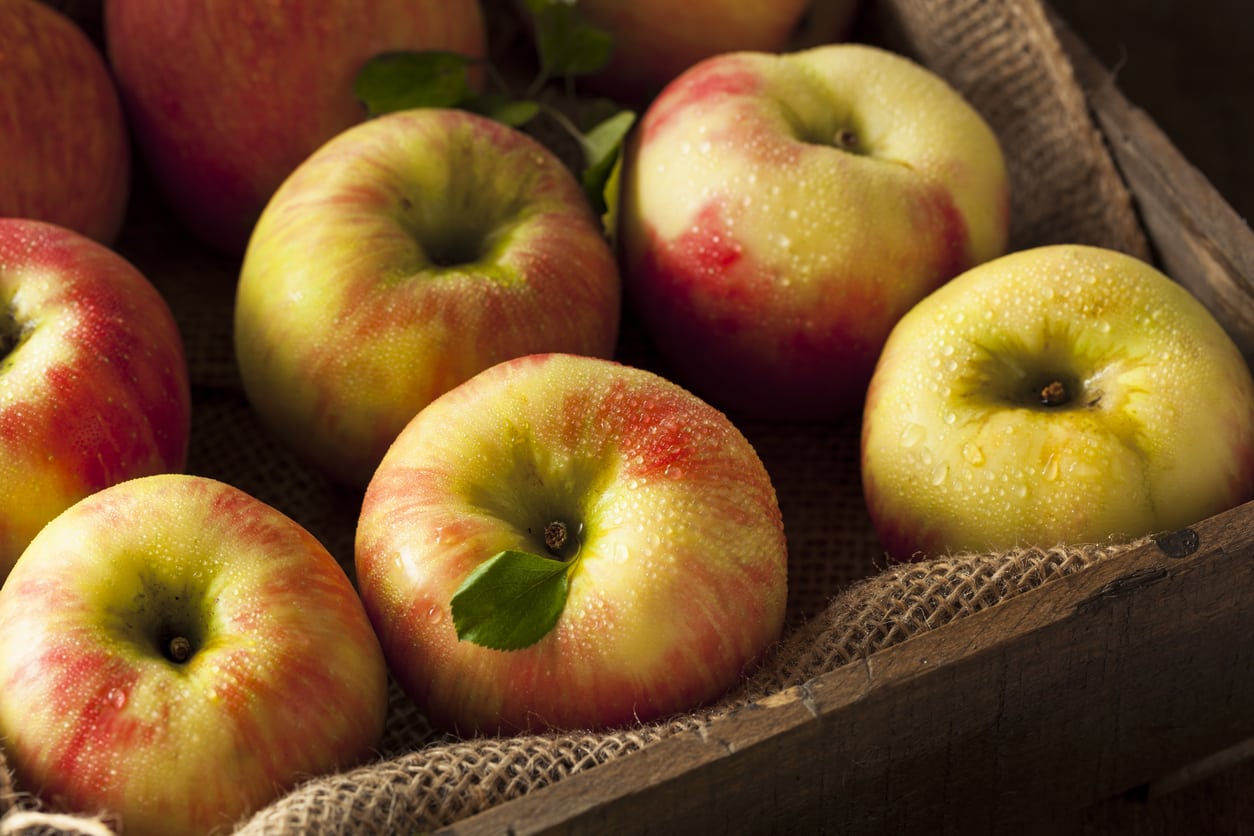

“At the end of the day, retailers will gravitate to wherever they can buy them the cheapest, not the best,” he said. According to Dennis Courtier, owner of the first commercial Honeycrisp producer, Minnesota’s Pepin Heights Orchard, that may impact the fruit’s quality. In the past ten years, the Honeycrisp has transformed from a seasonal delicacy to an industrialized staple that consumers expect in any season or any climate. When Northern Hemisphere Honeycrisps begin to expire in March and April, New Zealand farmers are starting to pick their fruit, allowing consumers to eat Honeycrisps year-round. This prevents the fruit from rotting until retailers ask for it, which can take months. In these storage facilities, low temperatures, decreased oxygen and increased carbon monoxide slow the fruit’s metabolism. Once the apples are picked, they’re collected into bins and loaded onto trucks to go to packing houses. (Warm Central Washington grows more than any other region.) Today, many Honeycrisp apples are grown for consumers halfway across the world, to be eaten months in the future. As a result, farmers rushed to produce the trendy breed, in spite of the growing challenges and in less-than-ideal conditions. The success of the Honeycrisp proved that shoppers would pay more for apples than anybody anticipated. Top that with a markup of two or three times the wholesale cost-more than $3 a pound, compared to about $1.50 for Red Delicious-and they’re still one of the most profitable items in the supermarket. This partly explains why, while your standard “low-grade” apples such as Red Delicious, Gala or Fuji sell wholesale for roughly $100 a bin (800 to 1,000 pounds of apples), Honeycrisps go for about four times that. “If you drop an apple two inches, it’s bruised,” Merwin said. The fruit itself is delicate and, as a result, doesn’t store well long-term. Originally bred in Minnesota, the Honeycrisp tree prefers colder climates, where the season only lasts between September and December. Honeycrisp growers estimate that it costs two to three times as much to produce as top-sellers like Fuji and Gala. The Honeycrisp is now the most planted variety in Washington State, the country’s biggest apple producer.īut the Honeycrisp is also a “finicky” apple, Merwin said. By 2011, they skyrocketed to 3.7 million boxes. Within four years of the first serious Honeycrisp plantings, yields reached 94,000 boxes. “People were just obsessed with that apple,” said Merwin, who also runs the Black Diamond Farm orchard and cidery in the Finger Lakes region and sells heirloom apple varieties locally. Thanks to a genetic variation, Honeycrisp cells are twice the size of most other apples, resulting in its signature, addictive crunch.

The Honeycrisp was created in 1960 at the University of Minnesota through apple cross-breeding and released in 1991, marking the start of a tree-fruit phenomenon. “It’s just a matter of when.” In any case, the Honeycrisp’s meteoric rise-and its precarious reign-illustrates how industrial agriculture and foodie culture are conspiring to change the makeup of our most basic foods. “It’s going to tank,” Ian Merwin, emeritus professor of pomology at Cornell University, told me. Will the annual Honeycrisp crop ever languish in industrial storage until it’s as unremarkable as today’s Red Delicious? But now, as more growers plant Honeycrisp-and its trendy descendants like the SweeTango and the EverCrisp-apple experts are wondering when supply will outpace demand. It was called the Honeycrisp, and in the intervening years, it became one of the most popular apples in the country, not to mention one of the most profitable items at the market. And I wasn’t the only one who felt this way. It was juicy, sweet and balanced with the perfect tartness, all packed into a profoundly satisfying crunch that snapped me out of my apple stupor. But as soon as I took my first bite, it was a revelation-even better than what an apple should taste like. Its coloring wasn’t terribly remarkable- a rosy blush with yellow undertones. Then one afternoon well into my adulthood, I was perusing fruit samples at the farmer’s market and came across a new variety. But the archetypal apple of my youth, the Red Delicious, had inexplicably transformed into a thick-skinned mealy ghost of its former self that still haunts fruit bowls everywhere. There was a brief affair with the green and tart Granny Smith, followed by a conversion to the firm and flavorful Fuji. Conscious Cuisine, presented by Chase, explores the relationship our meals have with the ecosystem at large.Īt some point during my California childhood, I stopped eating apples. Chefs and food lovers have long been some of America’s most innovative health and environmental advocates.


 0 kommentar(er)
0 kommentar(er)
